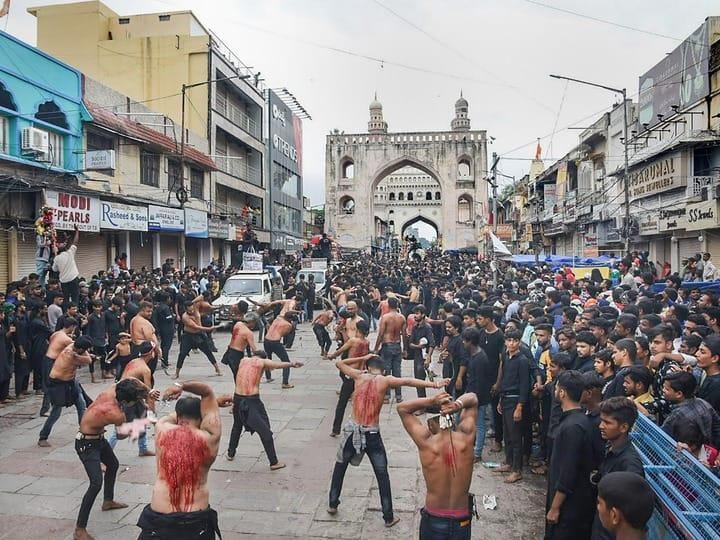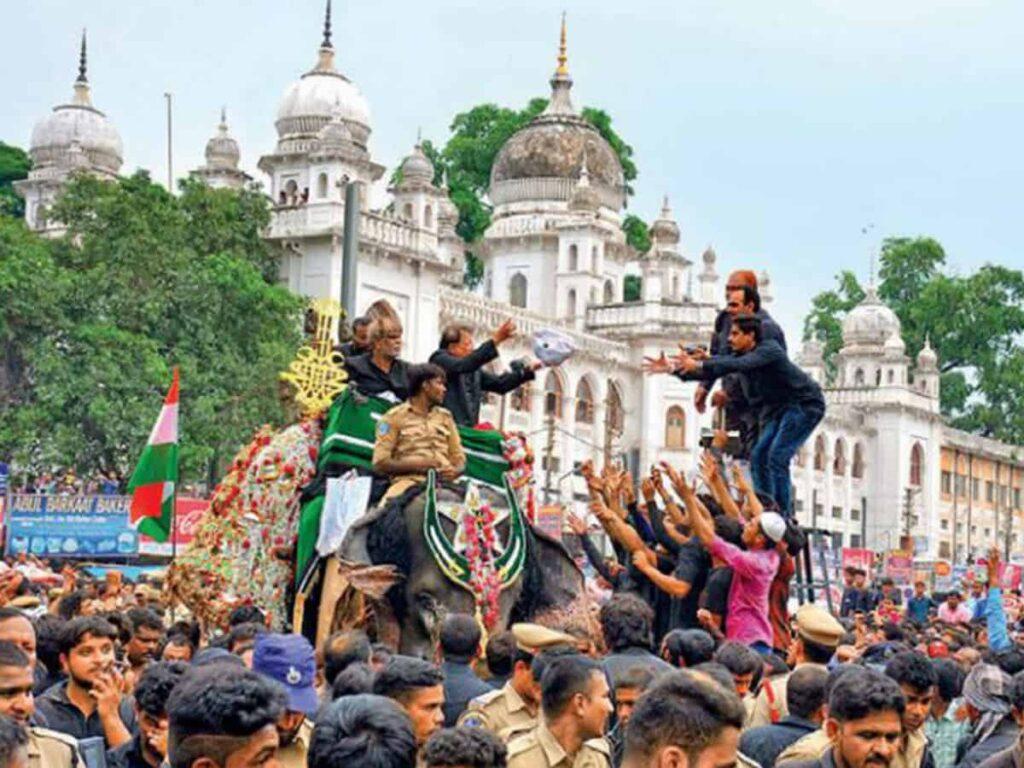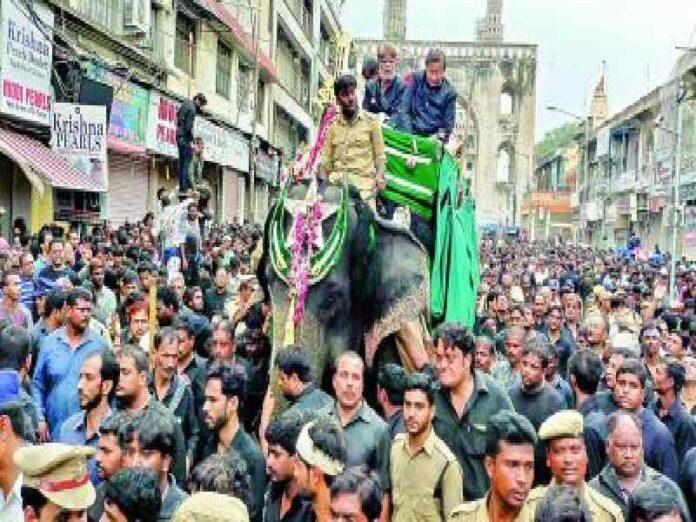A time to reflect on the sacrifices of Imam Hussain and his companions. A day of mourning and remembrance for the tragedy of Karbala.
Each year on the arrival of Muharram, my phone gets flooded with messages congratulating me on its arrival. ‘Happy Muharram’ or ‘Muharram Mubarak’ are some of the greetings that I (and I presume other observers of Muharram too) receive. Given that it’s a tiring process to individually explain to everyone what Muharram represents, and that we Muslims don’t congratulate each other on its arrival, I simply send a smiling emoji their way. This time, however, I feel that their ignorance needs to be allayed by explaining the significance of Muharram for Muslims; especially the Shia sect.
Muharram, just like Ramazan is the name of an Islamic month; specifically, the first Islamic month. Unlike Ramazan however it is not the month in itself here that is significant, but it is rather the events that transpired during this month that give it its importance.
The meaning of the word Muharram is banned or forbidden, and it is among the four holy months in the Islamic calendar where warfare is banned, the others being Rajab, Dhu al Qada, and Dhu al Hajj. (Huda, 2019).
Historical Background

It is of utmost importance to know what happened during the month of Muharram in the year 61 AH (which stands for the Latin Anno Hegirae, or ‘Year of the Hijrah’) because all the practices that are observed during this month are observed in remembrance of the events of 61 AH and the tragedy of Karbala.
In the year 661 AD or 40 AH, Imam Ali; who was the son-in-law of the Prophet, the first Shia Imam (leader), and the fourth Caliph (Caliphs or Khalifa were rulers of the state as well as an authority on religion) as per the other sects, was assassinated (Cavendish, 2011), after his death Muslims elected his eldest son, Imam Hasan as Caliph. However, owing to unnecessary bloodshed and fighting among the subjects, Imam Hasan decided to sign a peace agreement with Muawiyah Ibn Abi Sufyan, the governor of Syria, who had at one time competed against Imam Ali for the Caliphate. Through the peace agreement, Imam Hasan ceded his Caliphate to Muawiyah.
After Imam Hasan had been assassinated, and towards the end of his own life Muawiyah appointed his son Yazid Ibn Muawiyah as the Caliph. Syed Muhammad Khan, in his article ‘Islamic Caliphates’ in Ancient History Encyclopedia mentions that a number of Muslims, including Imam Hasan’s brother Imam Hussain, refused to recognise Yazid as the Caliph -therefore, a de facto authority on religion – as the peace treaty between Imam Hasan and Muawiyah stated on clear terms that Muawiyah did not have the right to nominate his successor (Abidiy, n.d.).
Yazid, knowing he would need the support and acknowledgement of Imam Hussain to gain legitimacy for his Caliphate, attempted to persuade him to lend his support. Imam Hussain however refused to lend his support to Yazid’s corrupt and illegitimate leadership. Around this time, Imam Hussain started receiving letters of support from the people of Kufa; a town in present-day Iraq, they invited the Imam to Kufa where they said that they would lend their support in proclaiming him as their rightful leader. The Imam then started heading towards Kufa taking 72 companions along, these included his family and close friends.
When Yazid came to know of this, he sent his army to block Imam Hussain midway and Imam Hussain and his companions were forced towards the plains of Karbala (in present-day Iraq). There the Imam’s caravan set up camp on the banks of the river Euphrates.
On the 7th of Muharram, 61 AH Yazid’s forces cut the supply of water and food to the camp of Imam Hussain, hoping that the thirst would make him surrender and recognise Yazid’s Caliphate. On the 10th of Muharram which is known as Aashura (meaning 10th), a battle ensued between the forces of Yazid, and the Imam and his companions, the result of which was the martyrdom of Imam Hussain along with his 72 companions (Who is Hussain, n.d.). The Imam sacrificed his own life, as well as the lives of his loved ones, but he refused to give in to Yazid’s illicit demand. That is why Muharram is observed each year, to recall and mourn the sacrifice of the martyrs of Karbala, and to commemorate Imam Hussain’s unwavering resolve to not bow down to tyranny.
Observances

Muslims – especially the Shia sect – view the tragedy of Karbala as the ultimate sacrifice and the triumph of truth over falsehood. Each year during the first 10 days of the month of Muharram, Muslims all over the world mourn the sacrifices made by Imam Hussain and his companions. People gather in an Imam Bargah (also known as Imam Bara) every day for the first 10 days of the month, where the speaker narrates the events of Karbala, and the mourners listen with sorrow on their faces, and tears in their eyes. Quite a lot of times these narrations are in the form of a Marsiya (elegy), a long, regimented poem describing the tragedy of Karbala. The 19th-century Lucknow poets Mir Anees, and Mirza Dabeer are considered to have been the finest poets of this genre.
Each day is assigned to a martyr from Imam Hussain’s family; on the 7th of Muharram, the speaker narrates the events leading to the death of Imam Hussain’s 13-year-old nephew Qasim, whose body was trampled by horses of the Yazidi forces when he fell down from his own horse in the battlefield, on the 8th of Muharram the speaker narrates the martyrdom of Imam Hussain’s brother, Abbas whose arms got severed when he went to fetch water from the river for Hussain’s daughter, Sakina. Finally, on the tenth of Muharram, the speaker narrates the death of Imam Hussain himself, who after the death of his six-month-old son, Ali Asghar, was the last person to be martyred.
At the end of each Majlis (as these gatherings in the Imam Bargahs are known), the mourners recite what are called Nauhas, these are lyrical laments or elegies based on the events of Karbala, one person recites, while the rest beat their chests as a sign of mourning. It should be kept in mind that these practices of self-flagellation through chest-beating which are a common sight in Muharram processions are expressions of grief and a symbol of resistance of truth against falsehood rather than a religious injunction, as Imam Hussain had himself asked the surviving members of his family not to tear their collars and claw at their faces when he is martyred (Al-Majlisi).
On the 9th and 10th of Muharram, which are the most important days of the month, the observers take out processions in their respective areas. Participants in the procession carry Taziyas on their shoulders, these Taziyas are in some cases replicas, or in other cases interpretations of the shrine of Imam Hussain. Alam or flags are also seen in the processions, which are the symbols of Hussain’s brother Hazrat Abbas, who was also the flagbearer of Imam Hussain’s force. Water, or refreshing drinks are distributed to those who are thirsty from what is known as a Sabeel; a large water container. Sabeels are set up as a reminder of the stoppage of water to Imam Hussain’s camp, and to ensure that the participants of the procession and the people around are not left thirsty.
Islam directs its adherents to mourn a loss of life for 40 days. Therefore, the followers of Imam Hussain and his cause wear black clothes (which in Islam represent grief) until the 40th day from his martyrdom or Chehlum (fortieth). Mourners abstain from any form of entertainment during this period, they conduct Majlis in their own homes by inviting friends and relatives during this period. Some Muslim housing societies also set up Sabeels outside the gates of their societies during this period, for people to drink freely.
Most people seeing that the 10th of Muharram has been declared a holiday assume that just like Eid, Muharram is a festival. Ultimately, a festival by definition is a celebration, Muharram however is a remembrance which is far from festivities.■ #hydnews #khabarlive







